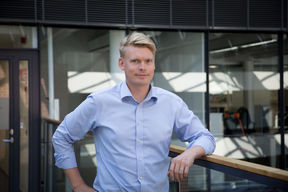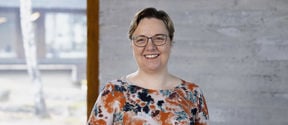Lauri Saarinen: Make production local and sustainable by highlighting the cost of global supply networks

What do you study and why?
I study data analytics-based operational management. The starting points of my research are the problems and data related to the management of companies’ operations.
Some companies’ are becoming less interested in developing international supply chains, and now the trend is to aim at getting production closer to the consumer and simultaneously to reduce the risks to their supply lines. Transport across the oceans has long been risky, and companies have started to move their production closer to the market. Companies may still invest in countries like China, but if the products are headed to the US, companies aim at manufacturing them closer to the market, for example in Mexico.
Consumers’ demand for locally produced and seasonal products is increasing. Amazon has responded to the demand by offering an almost infinite range of products with home delivery. The vast selection and quick delivery times challenge traditional slow-yet-efficient international supply chains. This is an opportunity for fast and flexible local production.
Time is particularly valuable when it comes to innovative products that may not have the latest technology. It’s best to these products are produced locally because it should be quick. Time is also critical for products that might spoil quickly and have unpredictable demand. The value of local production can be modelled by determining the value of delayed production. If production can be delayed until the demand is known, there will be no waste production. One currently notorious example of waste production is fashion brands’ tendency to burn unsold clothes to make room for new ones. In addition to quickly manufactured products, factories should also produce other more conventional products that balance the often rapid fluctuations in the production of innovative products.
In the future, small, cost-effective batch production will mean companies like fashion brands can abandon several-months-long production chains. For example, the manufacturers of consumer electronics can use the basic black colour for their primary production, while being prepared to assemble products in customised colours as well. For example this operating model would enable producing customised sneakers for the Otaniemi campus’ opening ceremony.
How did you become a researcher?
Before my academic career, I worked as a consultant. I grew tired of the fact that all goods and components had to be purchased in large batches and with long delivery times from countries such as China, while at the same time, production plants were closing down in Finland. I am particularly interested in studying how local production could be implemented in expensive countries such as Finland or Switzerland. How much can you pay for speed and flexibility?
What is the most essential characteristic of a researcher?
A researcher must be able to tolerate insecurity and uncertainty. One has to be persevering and curious. When you dare to sacrifice enough time, you will also get results. On the other hand, you are just as likely to end up with a dead end six months later. Then you have to come up with something completely different.
What do you expect from the future?
I hope that I will get an opportunity to develop inspiring research projects with companies and my new colleagues. For example, I am interested in questions related to the production challenges and innovations of growth companies.
At Aalto University, I have the chance to participate in developing data analytics and production management courses. Jukka Luoma and I are developing a new analytics course which focuses on the use of analytics in the development of various business areas. I enjoy teaching because when I teach, I also learn new things myself.
At Aalto, I am particularly interested in talented students, cooperation with companies and academically high-quality research.
- Published:
- Updated:
Read more news

Professor of Practice Pia Hannukainen: ‘I believe in the power of design also in the future’
Hannukainen believes that it is important for companies to secure skilled designers and for graduates to have sufficient skills for working life.
Vili Lehdonvirta: The digital world isn’t a separate dimension in some virtual cloud
Vili Lehdonvirta has joined Aalto University as a professor at the Department of Computer Science. He also continues to work half-time at the University of Oxford’s Internet Institute.
Many School of Business students want to go on exchange
Business students are also the most eager to go on exchange at Aalto University